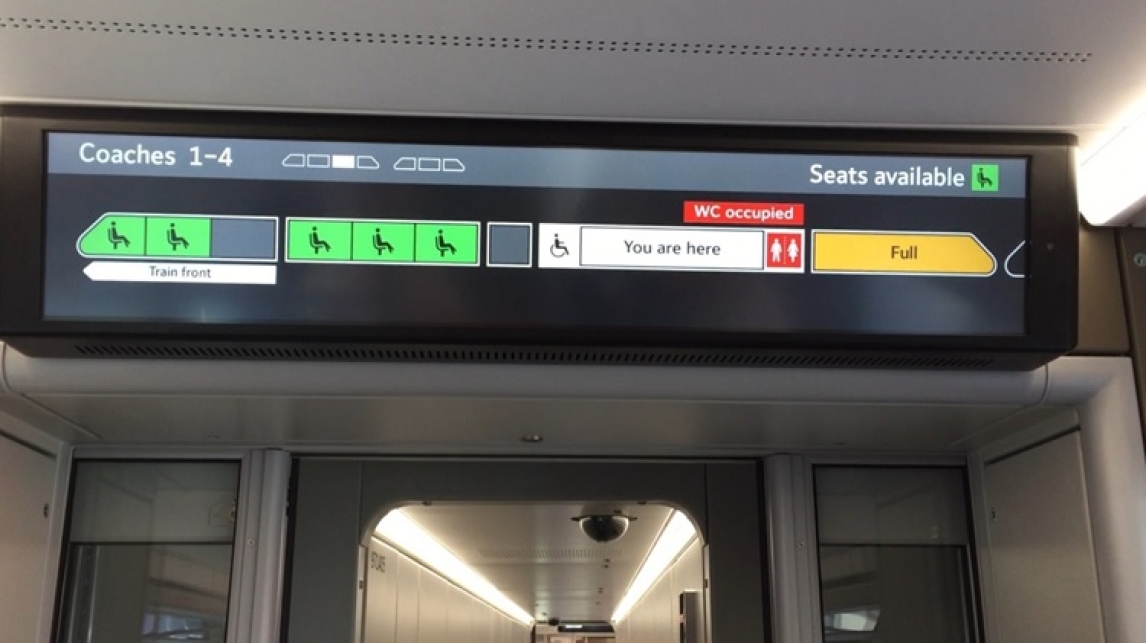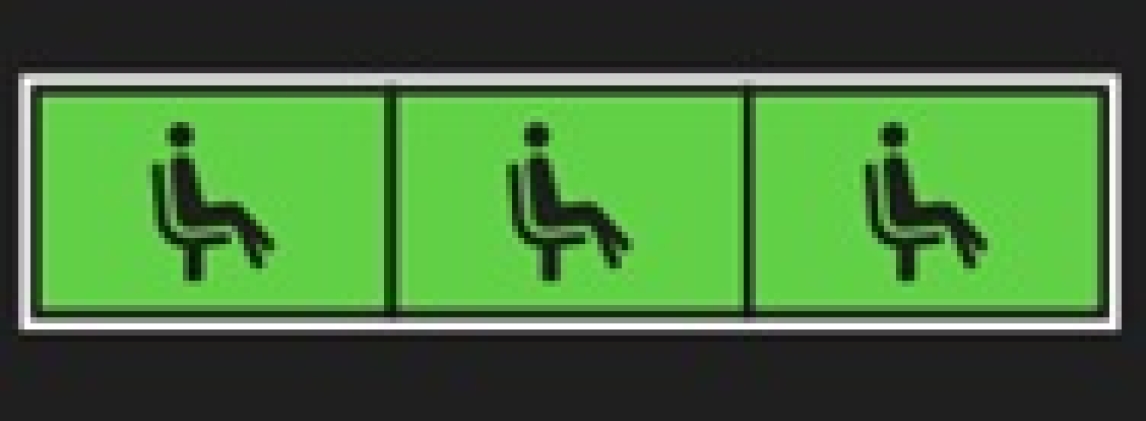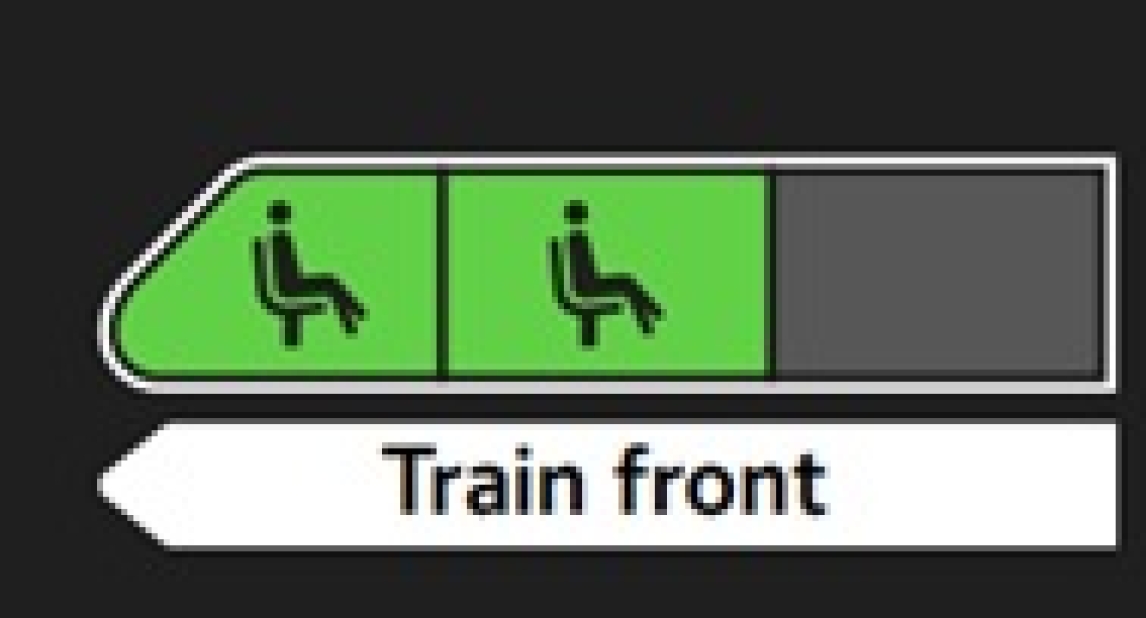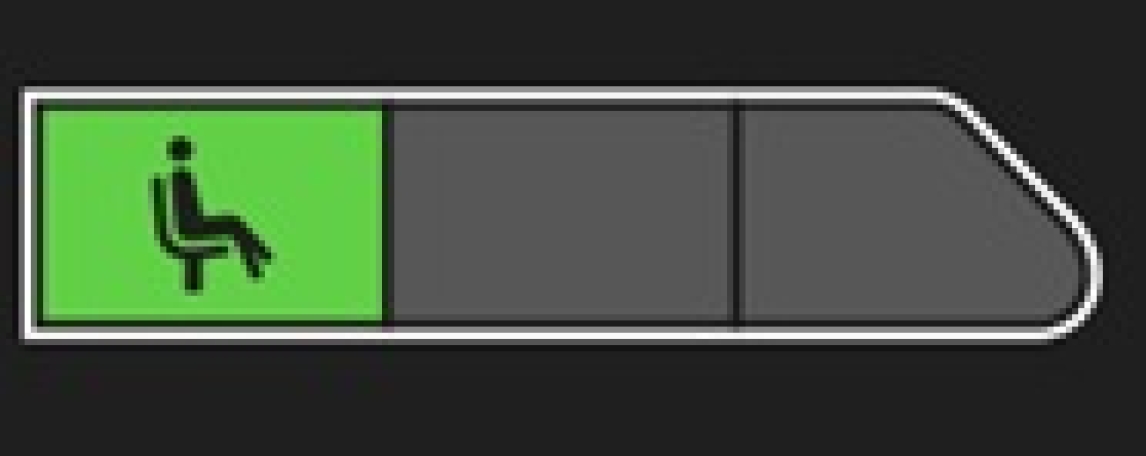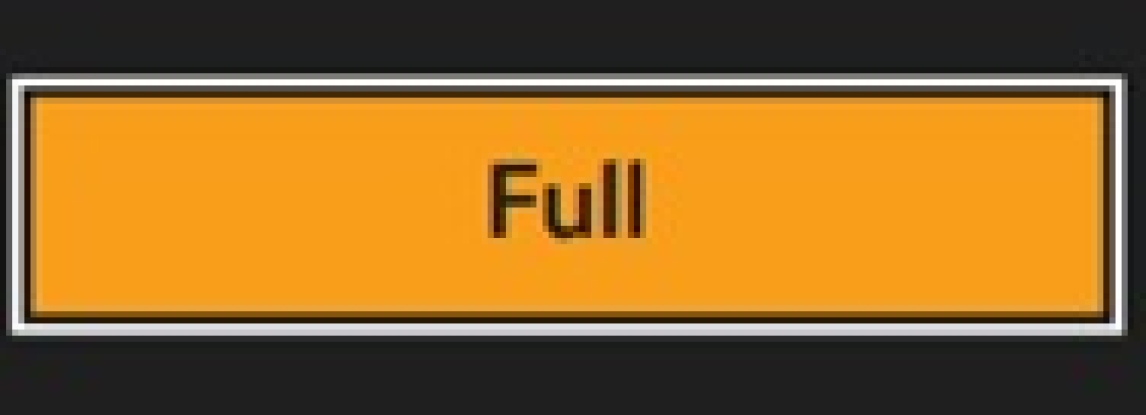Published on: Monday, 28 March 2022
Last updated: Tuesday, 29 March 2022
Our new trains have much improved passenger information screens in every single carriage – and one of the many useful things they can do is to help you find a seat on the train in another carriage if your carriage is full.
The screens display a graphic of the train you’re on, clearly showing the front of the train and marking whereabouts you are.
If carriages are filled in with three green blocks, it means the carriage is nearly empty.
Two blocks of green show there are passengers in the carriage but still plenty of seats available – about two thirds should be available.
One green block shows it’s busy but there are still about a third of the seats available – especially if you use all available seats.
If the carriage is full, then the seat area goes an amber/yellow colour with “Full” marked in text across it.
Red blocks show that the toilet is engaged – look out for the standard ladies’ and gents’ toilet symbol in the graphic to spot an empty toilet if you don’t want to wait!
If you’re on a train and it’s busy in your carriage, check the information screen, as there may well be seats further down the train.
Will I be safe to travel in a full carriage on a busy train?
Yes, it is still safe to travel in a full carriage. We’re still carrying out enhanced cleaning and sanitisation of all our trains, and we have good ventilation with either air conditioning which sucks in fresh air every six to nine minutes, or opening windows on some of our older trains, plus doors open at every station. We’re very grateful to customers following public health advice and wearing a face covering on busy trains – it’s an easy way for us to all help keep each other safe.
It’s often worth walking down the platform to get on a train, especially if it’s expected to be busy. It’s very tempting to get on the train using the doors nearest to the entrance where you got onto the platform, especially if time is a bit tight. Or some people choose to use the carriage which is nearest to the exit at their destination station. But if you walk down the platform, and get on the train further down, you’ll often find there are more seats available. At some stations trains are longer than platforms, so check posters at the stations to see where you need to get or off the train.
If you prefer to travel on a less busy train, the less busy trains tool on our website shows you which are the busiest and quietest rush hour trains to and from London Liverpool Street, so if you have flexibility about when you travel, you can find a less busy train to catch.
We are still running a revised timetable, as we - along with the rest of the rail industry – try to match services to demand for them to make sure we’re operating as efficiently as possible, especially now we’re entirely funded by the taxpayer. Some trains are busier than they were at the beginning of the year, but our commuter numbers are still only about 55 per cent of what they were before the pandemic.
We know that some rush hour trains can be pretty full on some days, and we’re sorry if you find yourself on a full train and you can’t find a seat. Sometimes, it can be the case that while a train is busy in some carriages, there are still seats available in other carriages – so it’s worth glancing at the information screen to check.
We are monitoring passenger numbers on all our trains on a daily basis. Where we find services that are regularly full, we will seek to either add extra carriages or an additional service to wherever practical. We are also looking at what changes we might make at the next scheduled timetable change in May



